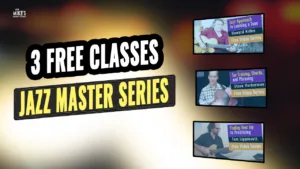Jack returns for his second class, the first session of a two-part series on Hybrids – A New Approach to Reharmonization. Jack explains and demonstrates how using hybrids or “slash chords” from a systematic point of view can add an entirely new direction to your harmonic point of view.
Jack Pezanelli welcomes everyone to a two-part class focused on the use of hybrid chords as a tool for reharmonization, demonstrating how these structures can create unique and dissonant sounds, especially within the context of tonal music. He starts by explaining the concept of hybrid chords, which are essentially triads over a bass note, often written in music as, for example, F Triad over G, creating chords like G9 sus.
Jack introduces a chart that ranks hybrid structures in order of acoustic weight, a term borrowed from the field of acoustics. This chart lists twelve triad structures over a C bass note, arranged by increasing levels of dissonance. The system is based on measurable acoustic properties, rather than subjective musical preferences. The chart uses Arabic numbers to indicate the relative dissonance and Roman numerals to show the interval relationship between the bass note and the triad.
As Jack delves into the practical application, he explains that each level of the chart offers three harmonic options based on the position of the triad in relation to the bass note. For instance, to achieve a specific level of texture at the fourth increment, he illustrates how to create a perfect fifth relationship between the triad and the bass note. Jack also demonstrates spread voicings, which involve dropping the middle voice of a chord down an octave to create a wider sound.
Using examples, Jack harmonizes a simple C scale melody with different levels of hybrid chords, showing how the texture changes from a warm, James Taylor-like sound at level four to a colder, more dissonant sound at level nine. He emphasizes that these hybrids operate independently of traditional tonal music rules, providing unique textures that can be memorized and applied creatively.
Towards the end, Jack explores more advanced hybrid structures, including the most dissonant ones at the higher end of the chart, referencing their use in Stravinsky’s compositions. He also discusses the potential of mixing hybrids with conventional chords and reassures students that experimenting within this system can yield consistently interesting results.
Jack concludes the session by applying these hybrid structures to the middle section of “My Favorite Things,” showing how the approach can transform a familiar tune into something harmonically rich and texturally diverse. He encourages students to explore and adapt these concepts, promising more in-depth exploration in the next lesson.











Well explained and very… very interesting material!
Actually a quite simple device to spice up your solo guitar playing style
by Enrico Dell'AquilaI didn’t find much about this topic in any other place, so to me it’s a really precious class.